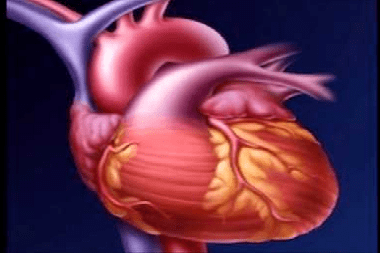Cardiovascular system >>>> Obesity of the heart - causes and treatment options
Obesity of the heart - causes and treatment options.

Excessively accumulated fat reserves are always distributed throughout the muscle tissue, and of course the myocardium is not bypassed. Fat deposits are located under the epicardium (outer shell of the heart muscle). A layer of fatty tissue inhibits the work of the muscle and gradually causes its atrophic changes. By working with force, the heart muscle is overloaded, which leads to heart failure.
Not the least role in obesity of the heart is played by a genetic tendency to place the fatty layer in such a dangerous place. But the acquired bad habits of overeating carbohydrate and fat-containing food, not observing moderation in food lead to the acquisition of such a dangerous disease as obesity of the heart.
A sedentary lifestyle that does not load the heart muscle is also a prerequisite for its obesity against the background of general weight gain.
Signs of obesity in the heart:
- shortness of breath even with little physical exertion (bending, brisk walking),
- swelling of the lower extremities,
- high blood pressure,
- chest pain,
- tachycardia (heart palpitations) for no apparent reason.
How is obesity of the heart treated? The accumulated fatty deposits and dystrophy of certain areas of the muscle can no longer be eliminated, but the emphasis is on supporting those areas of the heart muscle that are able to function normally. It is important in the treatment of obesity of the heart muscle to prevent further increase in body fat. This is achieved by reducing the total weight of the case with diets and moderate physical activity.
Swelling is relieved with diuretics to prevent stress on the heart, which is already working in an emergency mode. Trace elements that support the work of the myocardium are prescribed - potassium and magnesium in the form of vitamin and mineral supplements. The entire diet is being redesigned to combat obesity. The diet should contain plant foods rich in potassium and magnesium, proteins (this is a building material for muscle tissue).

Read

Read



























